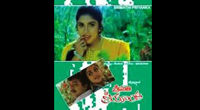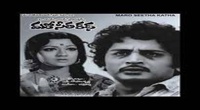
Mangoes are juicy stone fruit (drupe) from numerous species of tropical trees belonging to the flowering plant genus Mangifera, cultivated mostly for their edible fruit.
The majority of these species are found in nature as wild mangoes. The genus belongs to the cashew family Anacardiaceae. Mangoes are native to South Asia, from where the "common mango" or "Indian mango", Mangifera indica, has been distributed worldwide to become one of the most widely cultivated fruits in the tropics. Other Mangifera species (e.g. horse mango, Mangifera foetida) are grown on a more localized basis.
It is the national fruit of India, Pakistan, and the Philippines, and the national tree of Bangladesh.


Contents
Description
Mango trees grow to 35–40 m (115–131 ft) tall, with a crown radius of 10 m (33 ft). The trees are long-lived, as some specimens still fruit after 300 years. In deep soil, the taproot descends to a depth of 6 m (20 ft), with profuse, wide-spreading feeder roots and anchor roots penetrating deeply into the soil. The leaves are evergreen, alternate, simple, 15–35 cm (5.9–13.8 in) long, and 6–16 cm (2.4–6.3 in) broad; when the leaves are young they are orange-pink, rapidly changing to a dark, glossy red, then dark green as they mature. The flowers are produced in terminal panicles 10–40 cm (3.9–15.7 in) long; each flower is small and white with five petals 5–10 mm (0.20–0.39 in) long, with a mild, sweet fragrance. Over 500 varieties of mangoes are known, many of which ripen in summer, while some give a double crop. The fruit takes four to five months from flowering to ripen.
The ripe fruit varies in size, shape, color, sweetness, and eating quality. Cultivars are variously yellow, orange, red, or green, and carry a single flat, oblong pit that can be fibrous or hairy on the surface, and which does not separate easily from the pulp. The fruits may be somewhat round, oval, or kidney-shaped, ranging from 5–25 centimetres (2–10 in) in length and from 140 grams (5 oz) to 2 kilograms (5 lb) in weight per individual fruit. The skin is leather-like, waxy, smooth, and fragrant, with color ranging from green to yellow, yellow-orange, yellow-red, or blushed with various shades of red, purple, pink or yellow when fully ripe.
Ripe intact mangoes give off a distinctive resinous, sweet smell. Inside the pit 1–2 mm (0.039–0.079 in) thick is a thin lining covering a single seed, 4–7 cm (1.6–2.8 in) long. Mangoes have recalcitrant seeds which do not survive freezing and drying. Mango trees grow readily from seeds, with germination success highest when seeds are obtained from mature fruits.
Etymology and history
The English word "mango" (plural "mangoes" or "mangos") originated from the Malayalam word m???a (or mangga) via Dravidian mankay and Portuguese manga during the spice trade period with South India in the 15th and 16th centuries.
Mango is mentioned by Hendrik van Rheede, the Dutch commander of the Malabar region in his 1678 book, Hortus Malabaricus, about plants having economic value. When mangoes were first imported to the American colonies in the 17th century, they had to be pickled because of lack of refrigeration. Other fruits were also pickled and came to be called "mangoes", especially bell peppers, and in the 18th century, the word "mango" became a verb meaning "to pickle".
Cultivation
Mangoes have been cultivated in South Asia for thousands of years and reached Southeast Asia between the fifth and fourth centuries BCE. By the 10th century CE, cultivation had begun in East Africa. The 14th-century Moroccan traveler Ibn Battuta reported it at Mogadishu. Cultivation came later to Brazil, Bermuda, the West Indies, and Mexico, where an appropriate climate allows its growth.
The mango is now cultivated in most frost-free tropical and warmer subtropical climates; almost half of the world's mangoes are cultivated in India alone, with the second-largest source being China. Mangoes are also grown in Andalusia, Spain (mainly in Málaga province), as its coastal subtropical climate is one of the few places in mainland Europe that permits the growth of tropical plants and fruit trees. The Canary Islands are another notable Spanish producer of the fruit. Other cultivators include North America (in South Florida and California's Coachella Valley), South and Central America, the Caribbean, Hawai'i, south, west, and central Africa, Australia, China, South Korea, Pakistan, Bangladesh, and Southeast Asia. Though India is the largest producer of mangoes, it accounts for less than 1% of the international mango trade; India consumes most of its own production.
Many commercial cultivars are grafted on to the cold-hardy rootstock of Gomera-1 mango cultivar, originally from Cuba. Its root system is well adapted to a coastal Mediterranean climate. Many of the 1,000+ mango cultivars are easily cultivated using grafted saplings, ranging from the "turpentine mango" (named for its strong taste of turpentine) to the Bullock's Heart. Dwarf or semidwarf varieties serve as ornamental plants and can be grown in containers. A wide variety of diseases can afflict mangoes.
Cultivars
There are many hundreds of named mango cultivars. In mango orchards, several cultivars are often grown in order to improve pollination. Many desired cultivars are monoembryonic and must be propagated by grafting or they do not breed true. A common monoembryonic cultivar is 'Alphonso', an important export product, considered as "the king of mangoes".
Cultivars that excel in one climate may fail elsewhere. For example, Indian cultivars such as 'Julie', a prolific cultivar in Jamaica, require annual fungicide treatments to escape the lethal fungal disease anthracnose in Florida. Asian mangoes are resistant to anthracnose.
The current world market is dominated by the cultivar 'Tommy Atkins', a seedling of 'Haden' that first fruited in 1940 in southern Florida and was initially rejected commercially by Florida researchers. Growers and importers worldwide have embraced the cultivar for its excellent productivity and disease resistance, shelf life, transportability, size, and appealing color. Although the Tommy Atkins cultivar is commercially successful, other cultivars may be preferred by consumers for eating pleasure, such as Alphonso.
Generally, ripe mangoes have an orange-yellow or reddish peel and are juicy for eating, while exported fruit are often picked while underripe with green peels. Although producing ethylene while ripening, unripened exported mangoes do not have the same juiciness or flavor as fresh fruit.












.jpg)










